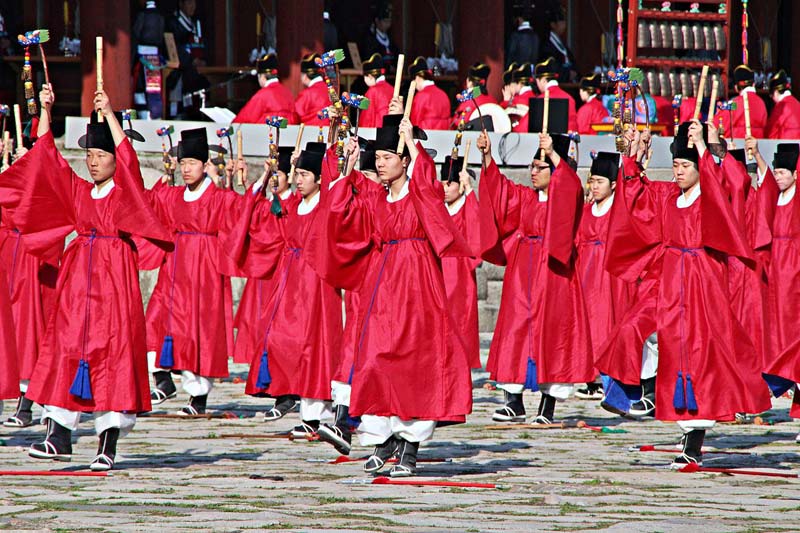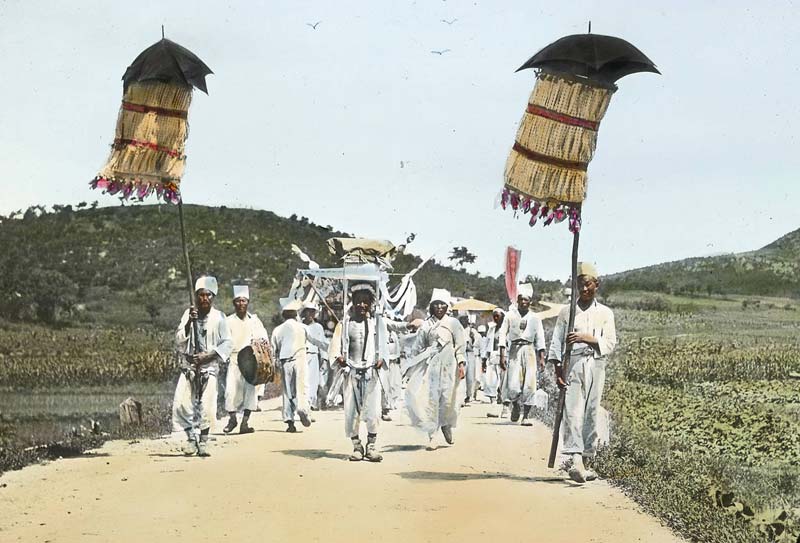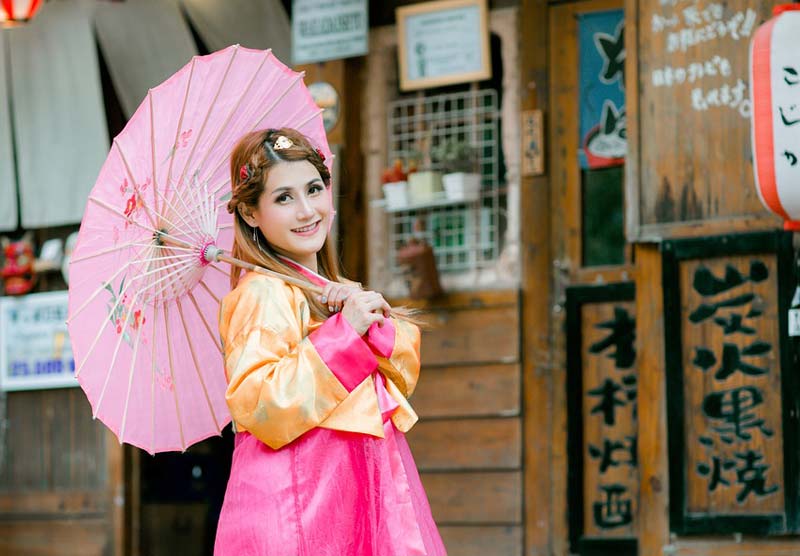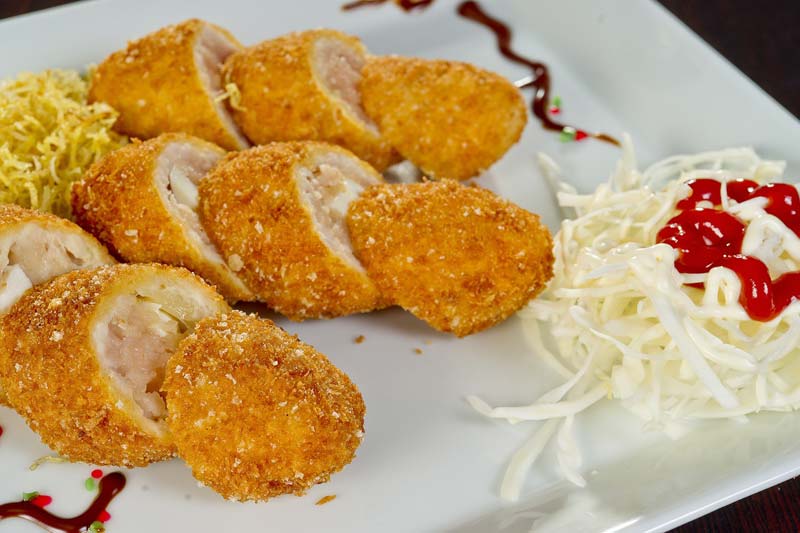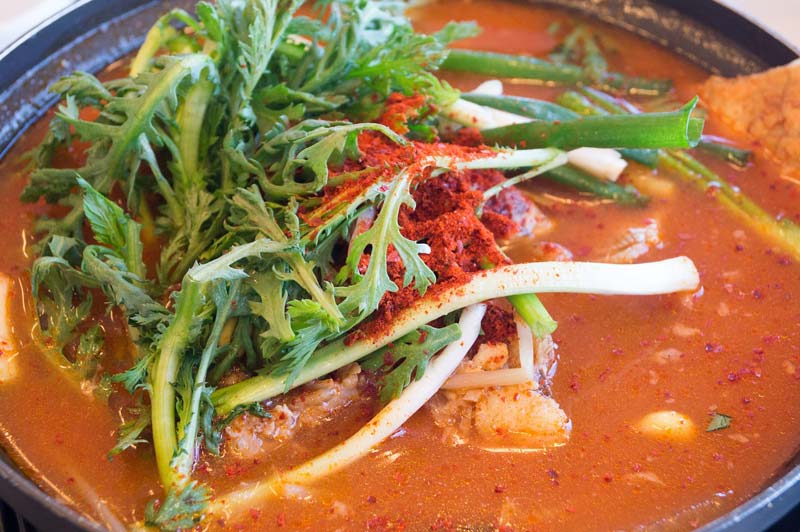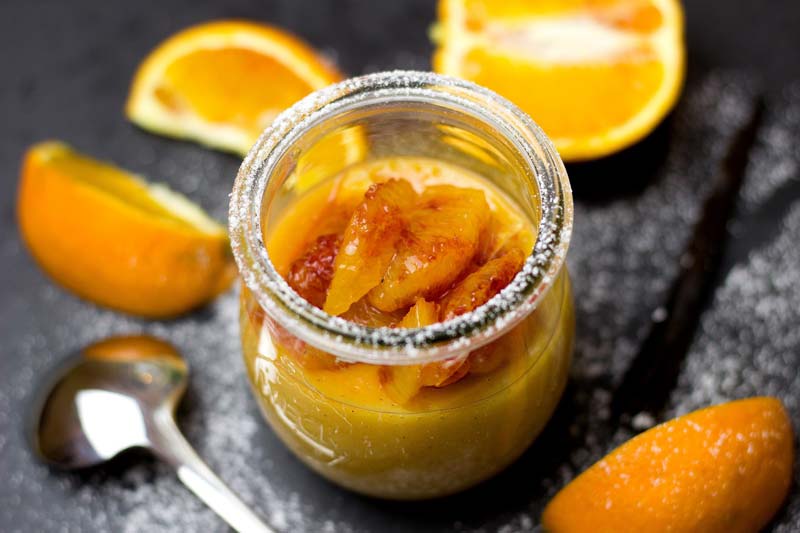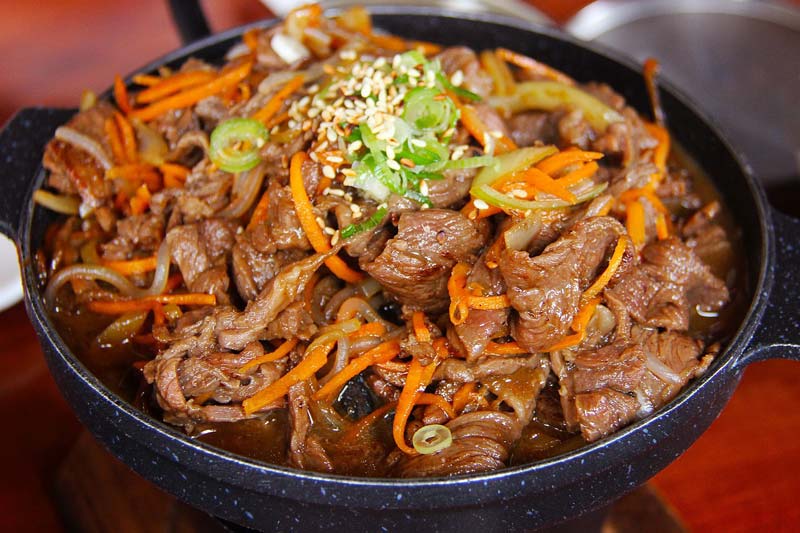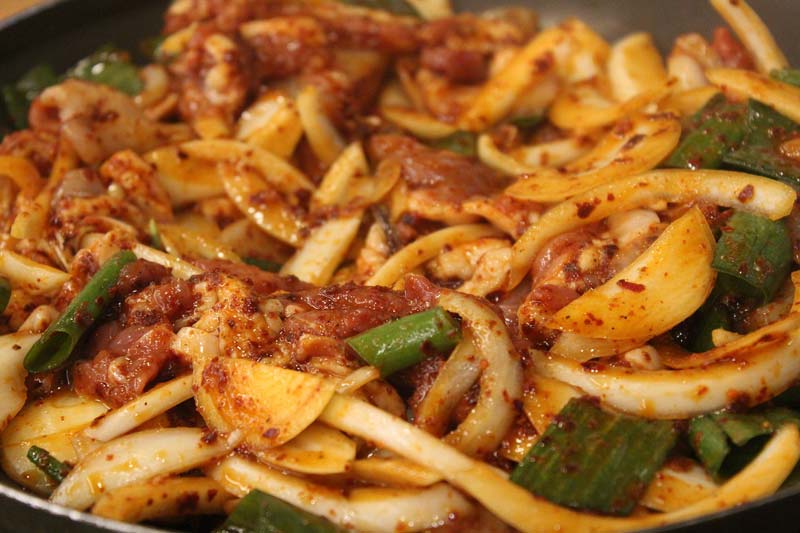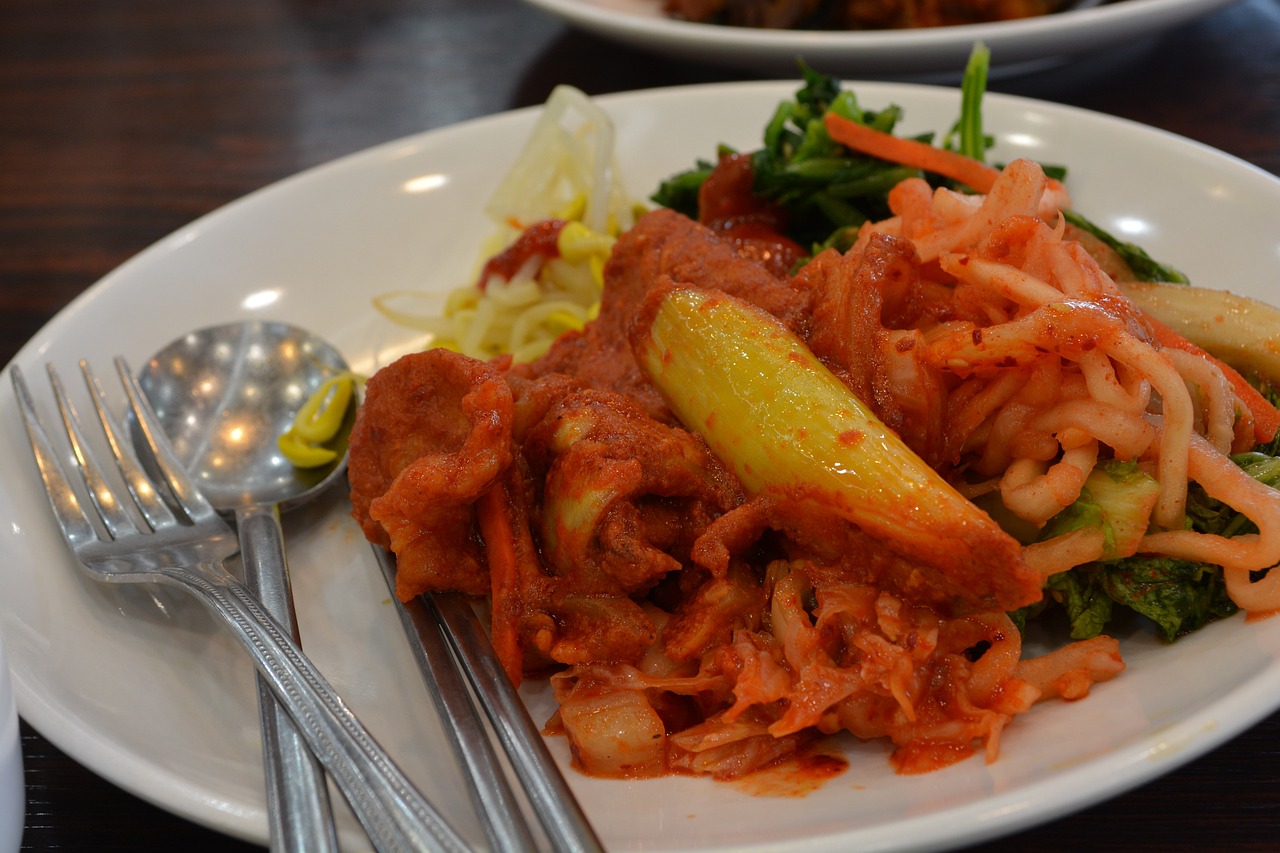Hon-Rye
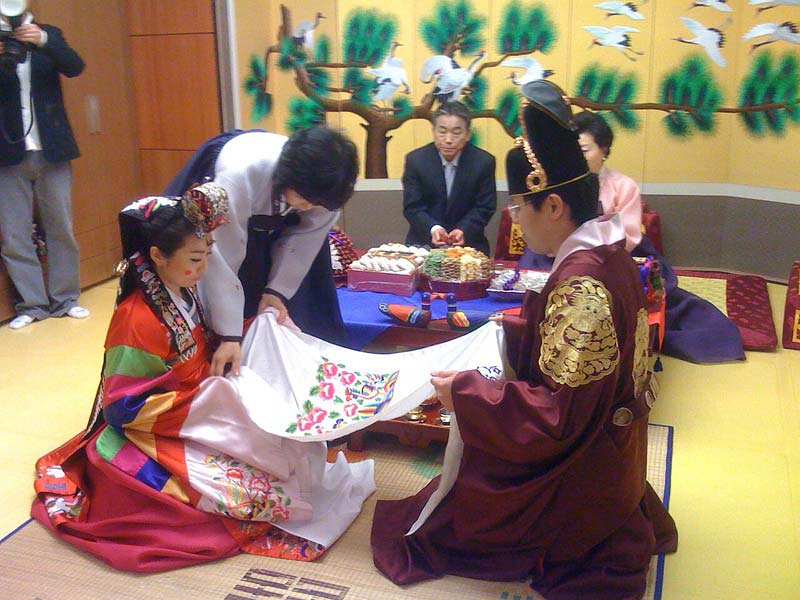
Introduction of Honrye
This is a traditional marriage service for a couple, thereby linking two families and creating a new family. It is a ceremony of forming a social unit through union of two individuals.
According to『Yegi』(old Chinese book on etiquette), Hon-Rye is formality to receive spouse. The name ‘Hon’ was derived from that spouse was normally received at sunset.
Wedding customs are changing by times, and they are also different according to ethnic group, social class, economic and religious conditions, etc.
Origin of Hon-Rye
The procedure of traditional wedding in Korea consisted of 6 courses, i.e. Eui-Hon, Nap-Chae, Yeon-Gil, Nap-Pye, Dae-Rye and U-Gui. These steps are different from the 6 courses recorded at Chinese?Ju-Rye?or the examples of?Ga-Rye?, which means that although old Korea had adopted Confucianism as a national policy, our ancestors had pursued our own marriage custom. It seems the spirit and thoughts of Korean people have been embedded in the ceremony. .
Meaning of Hon-Rye
Our marriage tradition calls for equality in husband-wife relations, as proved in the saying that “When man and woman become a couple, same level of treatment shall be exchanged between husband and wife.”
According to that spirit, couple was supposed to speak each other with politeness. It is a desirable spirit worth being inherited to couples of our time.
Procedure of Hon-Rye
Family of would-be bride or bridegroom first makes inquiry of appearance, personality, learning, family breeding, etc. of the other part through matchmaker. When both parties conclude each other agreeable, commitment of marriage is made, which process is called ‘Eui-Hon.’
Proposal letter and acceptance letter are exchanged at this stage.
This is an important formality that shall be processed carefully and thoroughly as it is the starting point of marital relationship between two families.
Nap-Chae, also called 4 stars or 4 pillars, is a formality of sending a letter with description of bridegroom’s birth date and hour to bride’s house. Actually it is proposal of marriage from bridegroom to bride, which is an indispensable step whether they had engagement ceremony or not. When bride’s family accepts the proposal, the formality is proceeded to the next stage.
Mourners including chief mourner wore the mentioned garments for 3 years, 1 year, 9 months, 5 months and 3 months respectively according to degree of kinship. In the old days, duration of wearing was ordained but nowadays keeping such period is not demanded any more as it is not practical.
? Mourners wore white overcoat (Korean traditional suit) along with hempen hood on head and mourning badge on breast (or band on sleeve). Female mourners wore white skirt and coat with white rubber shoes.
? Nowadays when using Western clothes, black suit shall be put on together with black neck tie, black socks, black shoes with hempen badge on breast or band on sleeve.
After Yeon-Gil, bridegroom’s family sends a box containing articles necessary for wedding ceremony to bride’s house in a formal way, which is called ‘Nap-Pye.’
* Procedure of bridegroom’s sending the box
- ① Ceremony of dispatch is held at the gathering of groom, his father and relatives at his house.
- ② A folding screen is set up and a mat with flower patterns is spread at the site.
- ③ A table is placed for the ceremony, which will be covered with ceremonial cloth.
- ④ Marriage paper and stationery are laid in front of groom’s father, while Nap-Pye box, its cover and belt, blue and red fabrics (present), letter-paper, thread and various simple gifts are laid in front of groom’s mother.
- ⑤ Would-be groom in formal suit will be seated before table, and other family members will be seated on both sides according to degree of kinship.
- ⑥ Groom’s father completes marriage paper and puts it into envelope, while groom’s mother stitches up blue and red fabrics, and puts them in the box by prearranged order.
- ⑦ Marriage paper is then laid on top of the articles.
- ⑧ Wrap all the contents with cloth and tie with belt.
* Procedure of receiving the box at bride’s house
- ① A folding screen is set up and a mat with flower patterns is spread at the receiving site.
- ② Place a table for the ceremony, and cover it with ceremonial cloth.
- ③ Lay an earthenware on the table.
- ④ Cover it with a wrapping cloth of blue and red color.
- ⑤ When Nap-Pye box arrives at bride’s house, it will be placed on the table or above the earthenware. After band is untied and wrapping cloth removed, bride’s father picks up marriage paper and reads it.
In the old days, moving of box was carried out by ‘Hamjin-Abi,’ who was a selected servant or employed by groom’s family. Nowadays, however, groom and a few friends of his backpack the box in quiet and unnoticed way, which seems a desirable trend.
* Requirements for Nap-Pye
– Documentation: written marriage paper
– Presents:
- each one piece of blue and red fabric (for skirt)
- a pair of ring made in white gold or cloisonne
(foodculture/foodculture2_2_a.jsp)
